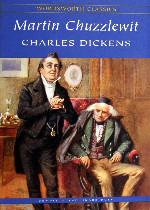
Life And Adventures Of Martin Chuzzlewit(马丁▪翟述伟) 立即阅读
The Life and Adventures of Martin Chuzzlewit (commonly known as Martin Chuzzlewit) is a novel by Charles Dickens, considered the last of his picaresque novels. It was originally serialised between 1842 and 1844. While writing it Dickens told a friend that he thought it his best work, but it was one of his least popular novels. Like nearly all of Dickens' novels, Martin Chuzzlewit was released to the public in monthly instalments. Early sales of the monthly parts were disappointing, compared to previous works, so Dickens changed the plot to send the title character to America. This allowed the author to portray the United States (which he had visited in 1842) satirically as a near wilderness with pockets of civilisation filled with deceptive and self-promoting hucksters.
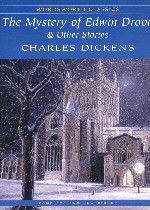
The Mystery of Edwin Drood(艾德温·德鲁德之谜) 立即阅读
The Mystery of Edwin Drood is the final novel by Charles Dickens. The novel was unfinished at the time of Dickens's death on 9 June 1870. Though the novel is named after the character Edwin Drood, it focuses more on Drood's uncle, John Jasper, a precentor, choirmaster and opium addict, who is in love with his pupil, Rosa Bud. Miss Bud, Edwin Drood's fiancée, has also caught the eye of the high-spirited and hot-tempered Neville Landless. Landless and Edwin Drood take an instant dislike to one another. Later Drood disappears under mysterious circumstances.
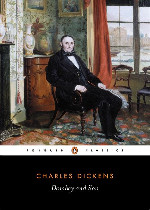
Dombey and Son is a novel by Charles Dickens, published in monthly parts from 1 October 1846 to 1 April 1848 and in one volume in 1848. Its full title is Dealings with the Firm of Dombey and Son: Wholesale, Retail and for Exportation. Dickens started writing the book in Lausanne, Switzerland, before returning to England, via Paris, to complete it. Illustrations were provided by Hablot Knight Browne ('Phiz').
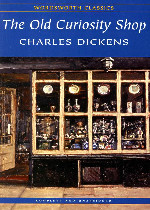
The Old Curiosity Shop(老古董店) 立即阅读
he Old Curiosity Shop is one of two novels (the other being Barnaby Rudge) which Dickens published along with short stories in his weekly serial Master Humphrey's Clock, from 1840 to 1841. It was so popular that New York readers stormed the wharf when the ship bearing the final installment arrived in 1841.[1] The Old Curiosity Shop was printed in book form in 1841. The plot follows the life of Nell Trent and her grandfather, both residents of The Old Curiosity Shop in London. Queen Victoria read the novel in 1841, and found it "very interesting and cleverly written".
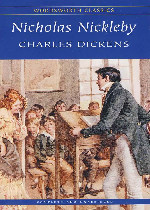
Nicholas Nickleby(尼古拉斯·尼克贝) 立即阅读
Nicholas Nickleby; or, The Life and Adventures of Nicholas Nickleby is Charles Dickens's third published novel. He returned to his favourite publishers and to the format that was considered so successful with The Pickwick Papers. The story first appeared in monthly parts, after which it was issued in one volume. The style is considered to be episodic and humorous, though the second half of the novel becomes more serious and tightly plotted. Dickens began writing Nickleby while still working on Oliver Twist and while the mood is considerably lighter, his depiction of the Yorkshire school run by Wackford Squeers is as moving and influential as those of the workhouse and criminal underclass in Twist.
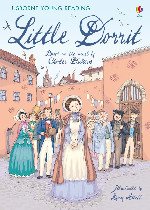
Little Dorrit is a novel by Charles Dickens, originally published in serial form between 1855 and 1857. The story features Amy Dorrit, youngest child of her family, born and raised in the Marshalsea prison for debtors in London. Arthur Clennam encounters her after returning home from a 20-year absence, ready to begin his life anew. The novel satirises the shortcomings of both government and society, including the institution of debtors' prisons, where debtors were imprisoned, unable to work, until they repaid their debts. The prison in this case is the Marshalsea, where Dickens's own father had been imprisoned.
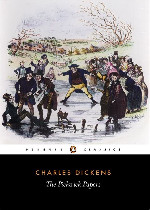
The Pickwick Papers(匹克威克外传) 立即阅读
The Posthumous Papers of the Pickwick Club (also known as The Pickwick Papers) was Charles Dickens's first novel. He was asked to contribute to the project as an up-and-coming writer following the success of Sketches by Boz, published in 1836 (most of Dickens' novels were issued in shilling instalments before being published as complete volumes). Dickens (still writing under the pseudonym of Boz) increasingly took over the unsuccessful monthly publication after the original illustrator Robert Seymour had committed suicide.
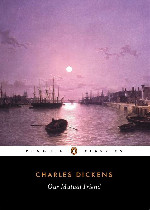
Our Mutual Friend(我们共同的朋友) 立即阅读
Our Mutual Friend, written in the years 1864–65, is the last novel completed by Charles Dickens and is one of his most sophisticated works, combining savage satire with social analysis. It centres on, in the words of critic J. Hillis Miller, quoting from the character Bella Wilfer in the book, "money, money, money, and what money can make of life." Most reviewers in the 1860s continued to praise Dickens' skill as a writer in general, though not reviewing this novel in detail. Some found the plot too complex, and not well laid out. The Times of London found the first few chapters did not draw the reader into the characters.